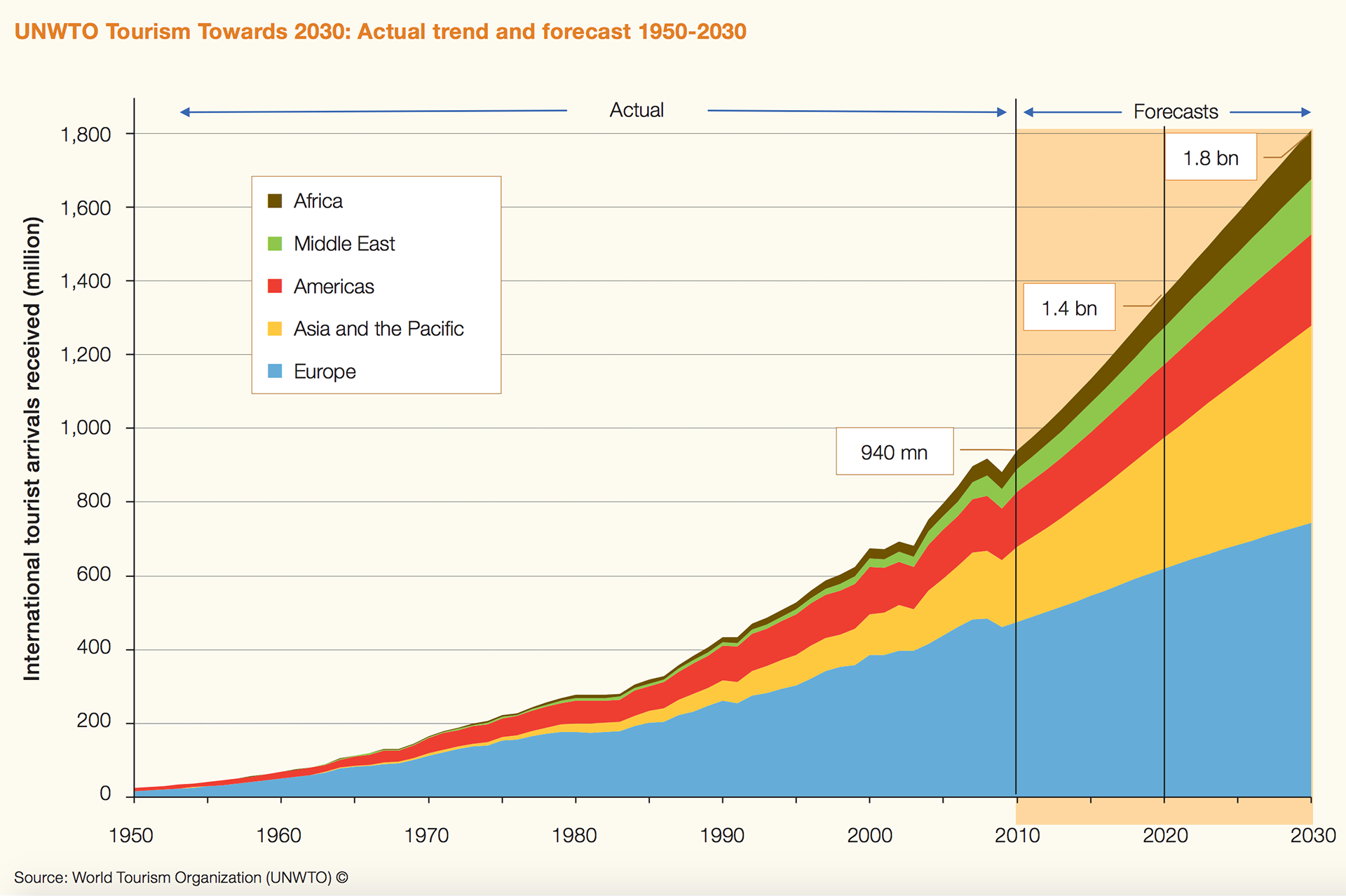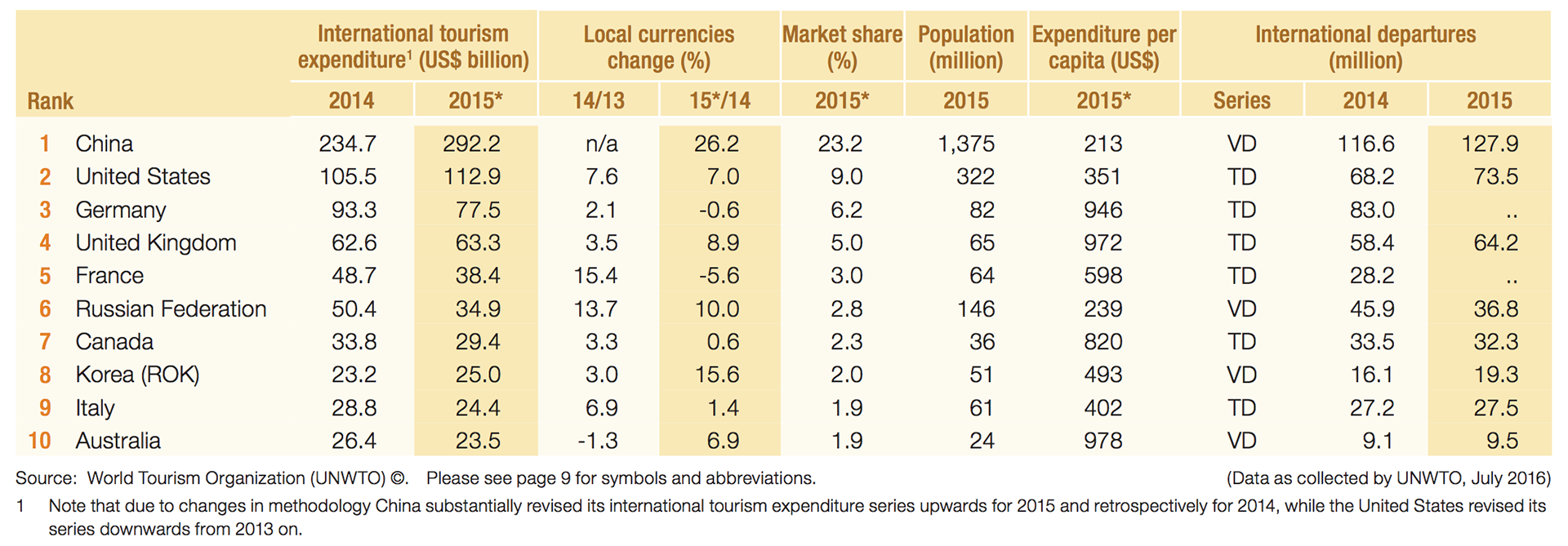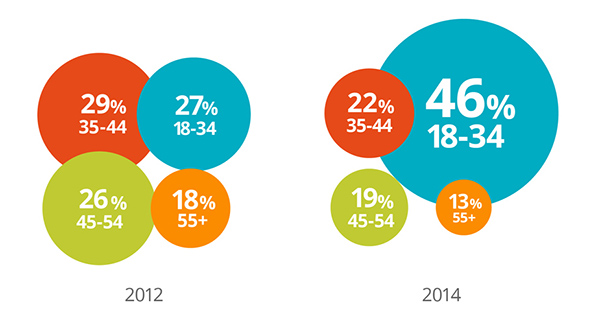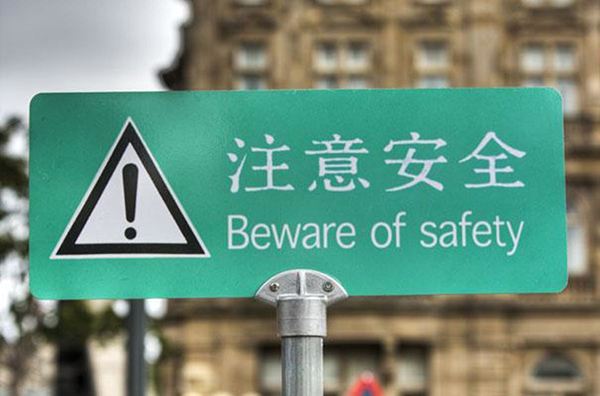If you don’t think that tourism is important, then consider the following: 1 out of 11 jobs in the world come from travel and tourism, and the sector contributes a massive 9.8% of the world’s total GDP. However, all this opportunity also brings a multitude of complications. Unlike some industries, the tourism industry operates in almost all corners of the world and in every language imaginable. As the world continues to move in a direction that is both “connected” and “disconnected”, tourism businesses face the enormous challenge of connecting with their target audience. This is something that only can be achieved by tourism specialists that are able to expand their language abilities.

The potential for growth in tourism is substantial. Source: UNWTO.
One of the keys to being a successful business is to be where your consumers are. This requires speaking the right language: their language. However, over the years we have become increasingly dependent on English. It’s the fix-all solution that enables communication; especially between travellers and locals. But as our insatiable desire for smartphones, the internet and new technology grows, so does our desire to communicate in our own language. Studies indicate that 72.1% of consumers spend most or all their time on websites in their own language. Did you know that only four of the top 10 countries with tourists who travel abroad have English as their first language? This alone gives us a lot of reasons to invest in translation services.

Top spenders in international tourism. Source: UNWTO.
Tourism and translation
Selling a tourism product or service in your own language is difficult on its own. So, things obviously get extra tricky when you need to sell them in a foreign language. The tourism industry can usually only offer words, images and videos of the product before the consumers makes their purchase decision, so getting these right is important. Therefore, the language of tourism needs to persuade, lure, woo and seduce your target audience in order to convert them from potential clients into actual ones.
“Translation in the tourism industry requires a high degree of cross-cultural communication”
Many tourism businesses do a fantastic job creating compelling content that engages their target audience, but problems often arise when they attempt to translate this content. This is because translation in the tourism industry requires a high degree of cross-cultural communication. In the words of Mirella Agorni, the role of the translator is to mediate the content and “make it available to a type of tourist who is necessarily different from that targeted by the original work.”
Localisation is the key
This is where the process of localisation comes in. Going further than translation, localisation is the process of culturally adjusting your content to a given language and audience. Localisation is comprised of multiple adjustments that ensure your content is marketed correctly to a global audience. These adjustments can be anything from:
- Adjusting graphics, such as altering the colours, fonts and images.
- Modifying design and layout to adhere to new languages, i.e. Arabic is read from right to left and some languages take up more space than others.
- Adjusting to diverse local requirements, i.e. currencies, measurements, dates, addresses and phone numbers.
- Performing multiple other adjustments that mould your content to those who you wish to target, i.e. hipsters in Germany, doctors in Turkey, Australian MICE (meetings, incentives, conventions and exhibitions) tourists and thousands of other sub-segments of tourists.
All of these adjustments—whether they are small or large—play a vital role in creating valuable multilingual content. And its importance cannot be understated. Businesses that use localisation will stand out from the crowd, making themselves the game changers of their respective markets. Using localisation conveys that you speak the reader’s language. It shows them who you are and how you want to be perceived, all while maintaining and increasing your overall brand image. Localised content is the end-product, but how you get there language-wise completely depends on which translation techniques you wish to use.
Creative translation
One key language service that aids in the creation of high-quality multilingual content is creative translation. This form of translation is a means to stop and reflect on the meaning of your message. It’s an opportunity to contemplate, adapt, change or completely rewrite the text. This process uses the target language’s grammar and nuances to create a culturally adapted message. The key difference to a standard translation is that the translator has a greater creative license and can further adapt the text to suit the target language.
This makes it a perfect match for the tourism industry. A study of 53,000 international tourists concluded that the number one factor for purchasing a holiday online is the “excitement tourists feel while purchasing their holiday”. And the use of emotive and creative language in your native tongue is key to success in our increasingly connected world.

A creative translator turns your texts into powerful, catchy copy for your local markets based off your brief and the source text.
What to localise?
In a perfect world, everything is personalised and all online content has been designed specifically for you, your language, how you use the internet, and in accordance with your values and your interests. Of course, this is not the reality we live in. As marketeers, we do our utmost to create narrower and more defined groupings of individuals in order to reach our goal of an individualised marketing approach. However, since you have a limited amount of time and resources at hand, we know that localising all of your content is not always feasible.
So, if you’re stuck wondering what you should localise or have just started your localisation process, let us give you a basic overview of the main channels in the tourism industry that can benefit from localisation.
Your website
A website is often the core of who you are and what your business is. For any tourism business that wishes to be perceived as a multilingual organisation, it is imperative that your website reflects this. As we already know, 72.1% of consumers spend most or all their time on websites in their own language. Therefore, having a website limited to English and one local language greatly diminishes your reach.
Take Destination Management as an example. This is a sector which prides itself on the languages offered. It employs multilingual staff, ensuring seamless operational support without any language barriers. Below is an extract from a Destination Management specialist which highlights this point:
“Our team is put together of employees with a diverse cultural background as well as staff from our region, giving us an explicit understanding of our clients’ needs and wishes as well as giving us the best regional insight. English, Spanish, Portuguese, French, Italian, Turkish, German, Norwegian, Danish, Swedish, Finnish, Russian, Bahasa Indonesia and Malay is spoken among our staff.”
Borealis Destination Management, Retrieved 17 February 2017.

Half of all B2B buyers are millennials. Source: Think with Google.
Sadly, this business and many others like it only have their websites available in English. A recent study by Google showed that 89% of B2B researchers use the internet during the B2B research process. And since Destination Management and other tourism businesses fall within the B2B category, this gives us a greater incentive to ensure that your business does its best to increase its online exposure. Additionally, localising more languages on your website can enhance your SEO, giving you a greater chance of being found in an array of increasingly cluttered search results.
Your social media channels
Social platforms are the golden goose of the tourism industry. The beauty of social media is its ability to connect tourists or clients on a global scale and at a cost-effective price. This builds brand presence and ultimately sells more products and services. And as their role in our travelling lives continues to increase, it shouldn’t come as a shock to anyone that there is a need to make shareable content available in multiple languages.
So how do you “win” at social media? The common reply is that it’s all about engagement. However, getting engagement is becoming an increasingly difficult task for tourism businesses. Adding additional languages is one way to open your business up, since it allows consumers to engage in the language that they’re comfortable in.
Furthermore, by increasing the language locales of your social media platforms, you also increase the chances of gaining User Generated Content (UGC) from engaged tourists. Such UGC is extremely valuable online content , which is backed up by many ongoing studies on the influence of UGC in the decision-making process of tourists (e.g. Munar, A.M. and Jacobsen, J.K.S., 2014. Motivations for sharing tourism experiences through social media. Tourism management, 43, pp.46–54).

Who wouldn't want to follow a friend here?
Your blog
As blogging is becoming fashionable again, more and more managers are looking at how they can adopt this strategy to attract additional clients. If your brand is already fortunate enough to be writing a blog, you will understand the importance of language and how high quality writing makes for a good blog (and vice versa, of course). Machine translating a blog won’t work at all, since the best-case scenario is a semi-comprehensible text that won’t even remotely resemble a professional blog. There are situations when machine translation makes a lot of sense, but that isn’t the case for this type of high-quality, creative content. On the other hand, just having the blog in one language is almost just as bad, even if it’s better than going down the machine translation route. Ideally, you’ll have native speakers creating new content for their respective territories. If this isn’t possible, you can let creative translators adapt your content and use proofreading and validation as additional quality control steps.
Your operational content
Although operational translations are a bit of a no-brainer, they’re often overlooked. These translations can be anything from translating signs, menus, brochures, itineraries, contracts, and many other on-site texts. The benefits of implementing this strategy includes expanding your customer base, preventing customer confusion, increasing your revenue and making sure that consumers choose your business over your competitors. Furthermore, having multiple on-site languages highlights your professionalism and the respect you have for your customers.

Don't become a bad translation meme
Just the beginning
This is just an introduction to the importance of translation and localisation in the tourism industry. By now it should be clear how fundamentally important it is to speak your customer’s language. And equally, how a little bit of localisation can go a long way in creating sustainable growth for businesses in this highly competitive area. If you’d like more in-depth information on tourism communication, I recommend taking a look at this paper by Mirella Agorni.
